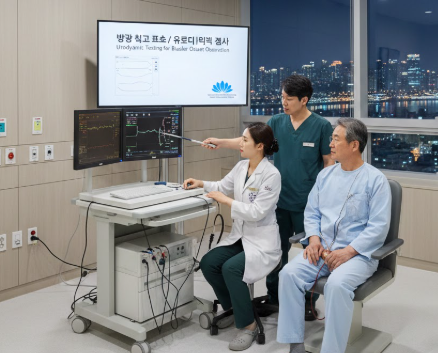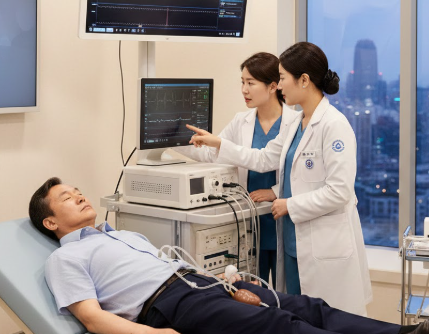South Korea is globally recognized as a leader in stem cell-based regenerative medicine, offering a wide array of therapies across aesthetic, orthopedic, and internal medicine fields. Whether you’re seeking youthful skin, relief from joint pain, or a holistic anti-aging boost, Korea offers some of the most advanced, science-backed treatments available.
This guide explores the main types of stem cell therapies offered in Korea, what each targets, how they work, and what international patients can expect.
🌟 1. Stem Cell Therapy for Skin Rejuvenation
✅ What It Treats:
- Fine lines and wrinkles
- Dull, aging skin
- Acne scars and enlarged pores
- Loss of elasticity and hydration
💉 How It Works:
Stem cells—typically adipose-derived mesenchymal stem cells (ADSCs)—are extracted from your own fat or used from donor sources (such as umbilical cord tissue). They’re injected into the dermis or applied topically after laser/microneedling to:
- Stimulate collagen and elastin
- Improve cell turnover
- Repair UV damage
- Reduce inflammation and redness
🔁 Often Combined With:
- PRP (Platelet-Rich Plasma)
- Laser resurfacing or RF microneedling
- Exosome therapy
- NAD+ IV drips
📅 Results:
- Visible improvement in 2–4 weeks
- Long-lasting glow and firmness with proper aftercare
- Repeat every 6–12 months as needed
💇♀️ 2. Stem Cell Hair Regrowth Therapy
✅ What It Treats:
- Thinning hair
- Androgenetic alopecia (male/female pattern baldness)
- Hair loss due to stress or aging
💉 How It Works:
Stem cells are injected into the scalp to revitalize hair follicles, increase blood supply, and extend the growth phase of the hair cycle. This therapy helps to:
- Wake up dormant follicles
- Strengthen existing hair shafts
- Improve scalp health
🔁 Often Combined With:
- Scalp microneedling
- Growth factor serums or PRP
- Low-level laser therapy (LLLT)
📅 Results:
- Hair shedding slows after 2–4 weeks
- Noticeable regrowth in 3–6 months
- Maintenance sessions may be recommended annually
🦴 3. Orthopedic Stem Cell Therapy (Joints, Cartilage, Spine)
✅ What It Treats:
- Knee osteoarthritis
- Rotator cuff or shoulder pain
- Lower back disc degeneration
- Ligament or tendon injuries
💉 How It Works:
Stem cells (from fat, bone marrow, or donor cord blood) are injected into the damaged joint or tissue. These cells help:
- Reduce joint inflammation
- Regenerate cartilage and connective tissue
- Delay or even avoid surgery (like knee replacement)
🔁 Often Combined With:
- Physical therapy
- Platelet-Rich Plasma (PRP)
- Hyaluronic acid joint injections
📅 Results:
- Reduced pain and improved mobility in 4–8 weeks
- Can last 1–2 years or more depending on lifestyle and condition severity
🧠 4. Stem Cell Therapy for Neurological Support (Experimental/Wellness)
✅ What It Targets:
- Cognitive decline
- Early-stage neurodegenerative disorders
- Brain fog and fatigue
💉 How It Works:
Stem cells, particularly those derived from umbilical cord tissue, are administered through intravenous (IV) infusion. These cells release anti-inflammatory cytokines and neurotrophic factors that may support:
- Brain cell repair
- Neural communication
- Overall cognitive function
⚠️ Note: These treatments are typically offered under wellness or experimental protocols and are not a cure for conditions like Alzheimer’s or Parkinson’s.
💖 5. IV Stem Cell Therapy for Anti-Aging and Whole-Body Wellness
✅ What It Treats:
- General aging and fatigue
- Weakened immune system
- Hormonal imbalances
- Poor recovery from illness or travel
💉 How It Works:
Donor stem cells (often from umbilical cord tissue) are purified and infused into the bloodstream. The goal is systemic rejuvenation, helping to:
- Reduce systemic inflammation
- Improve skin tone and hydration
- Boost immunity and cellular energy
- Aid in detox and hormone balance
🔁 Often Combined With:
- NAD+ therapy
- Vitamin C and amino acid drips
- Exosome therapy
📅 Results:
- Patients report increased vitality within 1–2 days
- Long-term effects may build with repeated treatments (every 3–6 months)
🧫 6. Stem Cell Therapy for Autoimmune or Chronic Conditions (Case-by-Case)
✅ May Support:
- Rheumatoid arthritis
- Lupus
- Psoriasis
- Crohn’s disease
💉 How It Works:
Stem cells help modulate the immune system and reduce chronic inflammation. These treatments are generally offered through specialized hospitals or research centers under strict supervision.
💡 These protocols are customized, and patients may need detailed diagnostic workups before approval.
🏥 Where Are These Treatments Offered in Korea?
You can find advanced stem cell treatments in major Korean medical districts, especially:
📍 Gangnam & Apgujeong (Seoul)
- High-end aesthetic and wellness clinics
- English-speaking staff and concierge services
- FDA-equivalent approvals from Korea’s MFDS
📍 Bundang & Ilsan
- Major university hospitals and research centers
- Best for orthopedic and chronic disease protocols
📍 Busan & Daegu
- Regional hubs offering competitive pricing
- Often more personalized and less crowded
💰 What Do These Treatments Cost?
| Treatment Type | Approx. Cost (USD) |
|---|---|
| Facial stem cell therapy | $1,500–$3,000 |
| Hair restoration | $1,000–$2,500 |
| Knee/joint therapy | $3,000–$7,000 |
| Anti-aging IV infusion | $2,000–$5,000 |
| Autoimmune protocols | $7,000–$15,000+ (varies by case) |
Many clinics offer all-inclusive medical tourism packages, which may include hotel, translation, transportation, and post-treatment care.
✈️ Who Is a Good Candidate?
You may benefit from Korean stem cell therapy if you:
- Are looking for non-surgical, regenerative solutions
- Want anti-aging, natural rejuvenation
- Have joint pain or early osteoarthritis
- Struggle with hair loss or skin aging
- Are exploring holistic recovery from illness
✅ Final Thoughts
Korea offers one of the broadest and most advanced ranges of stem cell therapies in the world. With its combination of cutting-edge science, skilled doctors, modern clinics, and hospitality, it’s a top choice for international patients seeking safe, personalized, and effective regenerative treatment.




